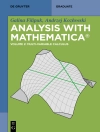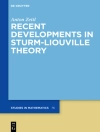With the advent of digital computers more than half a century ago, – searchers working in a wide range of scienti?c disciplines have obtained an extremely powerful tool to pursue deep understanding of natural processes in physical, chemical, and biological systems. Computers pose a great ch- lenge to mathematical sciences, as the range of phenomena available for rigorous mathematical analysis has been enormously expanded, demanding the development of a new generation of mathematical tools. There is an explosive growth of new mathematical disciplines to satisfy this demand, in particular related to discrete mathematics. However, it can be argued that at large mathematics is yet to provide the essential breakthrough to meet the challenge. The required paradigm shift in our view should be compa- ble to the shift in scienti?c thinking provided by the Newtonian revolution over 300 years ago. Studies of large-scale random graphs and networks are critical for the progress, using methods of discrete mathematics, probabil- tic combinatorics, graph theory, and statistical physics. Recent advances in large scale random network studies are described in this handbook, which provides a signi?cant update and extension – yond the materials presented in the “Handbook of Graphs and Networks” published in 2003 by Wiley. The present volume puts special emphasis on large-scale networks and random processes, which deemed as crucial for – tureprogressinthe?eld. Theissuesrelatedtorandomgraphsandnetworks pose very di?cult mathematical questions.
Jadual kandungan
Random Graphs and Branching Processes.- Percolation, Connectivity, Coverage and Colouring of Random Geometric Graphs.- Scaling Properties of Complex Networks and Spanning Trees.- Random Tree Growth with Branching Processes — A Survey.- Reaction-diffusion Processes in Scale-free Networks.- Toward Understanding the Structure and Function of Cellular Interaction Networks.- Scale-Free Cortical Planar Networks.- Reconstructing Cortical Networks: Case of Directed Graphs with High Level of Reciprocity.- k-Clique Percolation and Clustering.- The Inverse Problem of Evolving Networks — with Application to Social Nets.- Learning and Representation: From Compressive Sampling to the ‘Symbol Learning Problem’.- Telephone Call Network Data Mining: A Survey with Experiments.












